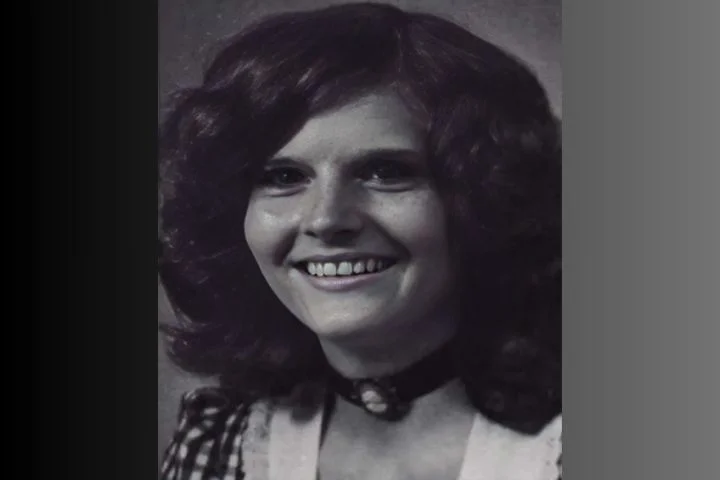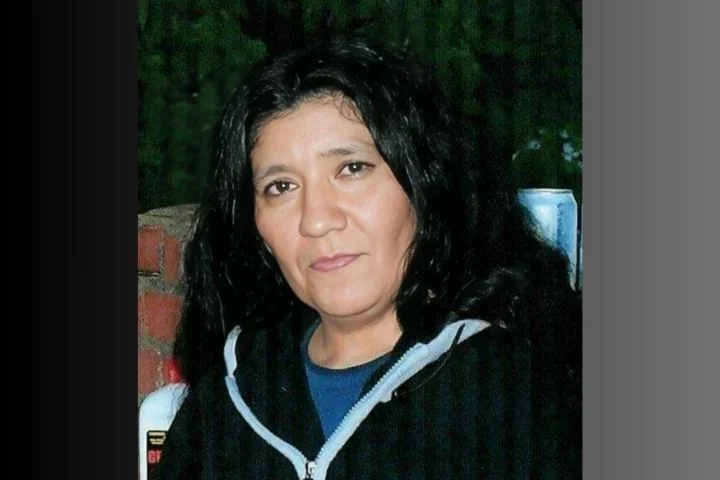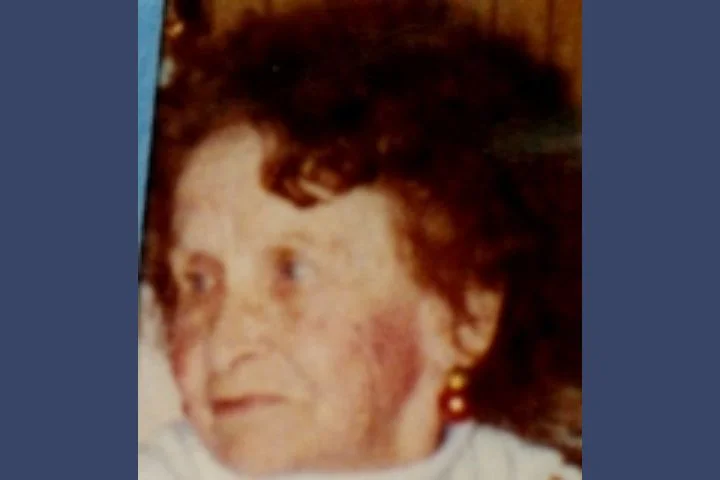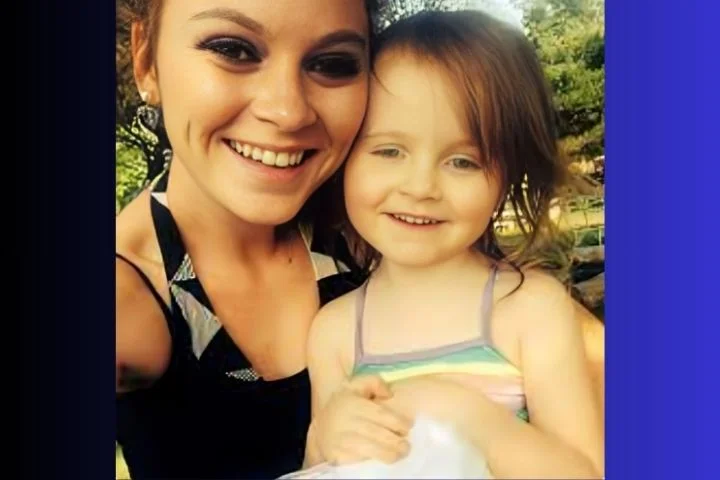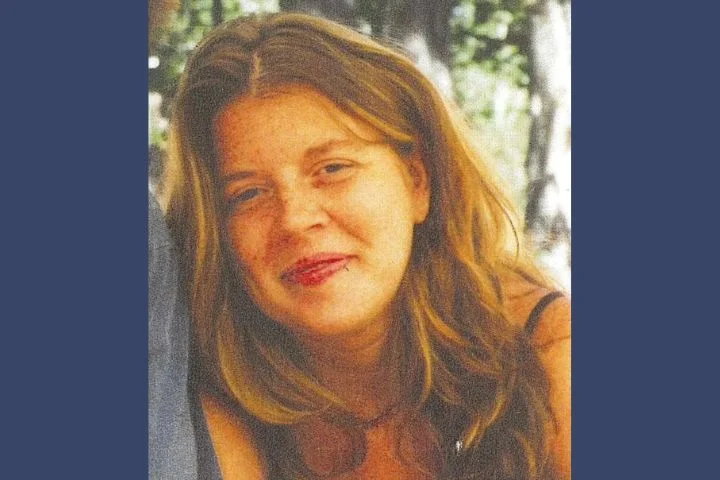Kathryn Adam left her Salina, Kansas, home before dawn on the morning of Wednesday, April 29, 1993. The 35-year-old drove her L’eggs company van to a local Kwik Shop, where she bought gas, a newspaper, and a cup of coffee. She then headed for Triplett’s Mini Storage, located at the corner of Magnolia and Centennial Roads, where she started to load the Ford Econoline van with the L’eggs products she needed to complete that day’s deliveries. She never made any deliveries that day; she was never seen again.
Kathryn’s 16-year-old daughter, Laura, was not too concerned when her mother wasn’t at their apartment when she got home from school that afternoon. Although it was unusual for her to come home to an empty apartment, she thought maybe her mother had gotten caught up at work or had met up with a friend on the way home. As hours went by, however, she started to worry that something might be wrong.
Since Kathryn didn’t work out of an office, Laura had no way of getting a hold of her while she was at work. As she waited anxiously for any word from her mother, she eventually fell asleep. She woke up early Friday morning with the feeling that something was wrong and immediately searched the small apartment for any sign of her mom. It was clear that Kathryn had never returned home the previous night.
Laura started calling some of her mother’s co-workers and learned that Kathryn hadn’t made any of her scheduled store visits on Thursday. When Laura got off the phone, she knew that something was wrong. She called the Salina Police Department and reported her mother missing.
Laura told police that she had last seen her mother around 11:00 pm on Wednesday, right before she went to bed. When she woke up for school on Thursday, her mother had already left the apartment to go to work. Investigators immediately issued a BOLO for both Kathryn and her white work van.
After speaking with Kathryn’s boss, investigators learned that Kathryn kept her L’eggs inventory at Triplett’s Mini Storage, about three miles away from her apartment. She would go there each morning to pick up the products she needed to restock at various retail stores that day. Detectives were sent to the storage facility to see if they could find any clues to Kathryn’s whereabouts.
As soon as investigators arrived at Kathryn’s storage unit, they knew that they weren’t dealing with a routine missing person case. The door to the storage unit was open and there was a small amount of blood inside. There was more blood in the parking lot right outside of the unit, as well as a few items of L’eggs merchandise. Detectives theorized that Kathryn had been in the process of loading her van with products when someone attacked her.
Around 6:00 pm, investigators learned that Kathryn’s van had been found just two miles away from the storage unit. It had been abandoned in the parking lot of Russell’s Restaurant, which was closed at the time for renovations. The van was muddy and appeared to have been driven off-road recently. When they looked inside, they found that the back of the van was covered in blood. There was no sign of Kathryn.
Investigators assumed that the blood found in the storage unit and van belonged to Kathryn but weren’t sure if she had been killed. It was possible that she was injured but still alive, so they appealed to the public for help in locating her. They also wanted to hear from anyone who had seen either Kathryn or her van on Thursday or Friday.
After reading about the disappearance in a local newspaper, the overnight clerk at the Kwik Shop on Crawford Street called police and told them that he had waited on Kathryn Thursday morning. She had stopped to fill up her gas tank before heading to the storage unit to pick up her merchandise; while there, she had picked up a newspaper and a cup of coffee. The store had surveillance cameras, which showed Kathryn leaving the store, alone, at 4:33 am. If someone had followed her from the gas station to the storage facility, they were not captured on surveillance footage.
Kathryn kept meticulous mileage records in her van, so investigators were able to tell exactly how many miles the van had been driven since she filled up the tank Thursday morning. Although police have never confirmed the distance the van had been driven, it was rumored to be 60 miles. This would mean Kathryn could have been taken anywhere in a 30-mile radius of Salina. It was a vast area to search.
Police started driving through the rural area, searching along culverts and in isolated fields. They paid close attention for any signs of trampled grass that could indicate the van had been driven there but came up empty. Their search was hampered by the fact that heavy rain moved into the area, erasing potential tracks.
After receiving a tip from a woman who thought she saw a white van parked by the intersection of Burma and Magnolia Streets, investigators searched through a one-mile section of land near there. They found nothing.
The Kansas State Police used their helicopter to fly over Saline County with a thermal imaging camera in an attempt to locate Kathryn or her body. They flagged several locations where they thought they might have seen something, but when investigators checked each one out they didn’t find anything relevant to their investigation.
While the physical search for Kathryn was underway, detectives began interviewing everyone who knew her in hopes of finding some clue as to what had happened to her. They started with her immediate family.
Kathryn was the oldest of two daughters born to Harry and Mary Swendson in Atchison, Kansas. She was a bright child; during her time at Effingham Junior High School, she was consistently on the honor roll. She loved music and was a member of her school’s band and chorus; she also sang in her church choir.
She went to Atchison High School and maintained excellent grades during her freshman and sophomore years, but soon fell in with what her mother called “the wrong crowd” and started using drugs. Her grades declined and her parents decided they didn’t want to deal with her behavior so she was sent into foster care.
Kathryn’s foster family lived in Hope, Kansas, and she started her junior year at Hope High School. It was there that she met and fell in love with Gerald Adam; the feeling was mutual and they got married in the fall of 1975 when Kathryn was only 17 years old. After the wedding, Kathryn still managed to complete high school, graduating from Topeka High School in 1976.
Gerald and Kathryn eventually moved onto a farm in Solomon, Kansas. Kathryn worked various odd jobs while Gerald worked on the farm and as a truck driver. Two years after they got married, their only child, Laura, was born. Although those who knew the couple believed they had a great relationship, Laura would later say that it was not a happy home. According to her, neither Kathryn nor Gerald had really wanted to be parents and they didn’t seem to get along very well.
Laura stated that her mother was a very involved parent who attended all of her sports games when she was in school and enjoyed cheering her on. Laura didn’t have a great relationship with her father, who spent most of his time on the road as a truck driver and would simply ignore Laura when he was home.
In early 1993, Kathryn apparently decided that she had enough of Gerald. She had two deputies accompany her to the family farm one afternoon and stand watch while she gathered some of her and Laura’s belongings. Kathryn and Laura then left the home, never to return.
In March 1993, Kathryn rented a one-bedroom unit at the Iron Crest Apartments in Salina. Although it meant that she and Laura were pressed for space, it was only temporary; she planned to upgrade to a two-bedroom in a couple of months. She got a job with the L’eggs Hosiery Corporation shortly after moving into the apartment.
Kathryn had some reservations about her new job; she didn’t like the fact that she had to leave the apartment while it was still dark and go to the storage unit alone. Still, the early hours allowed her to have her afternoons free, and she wanted to be home when Laura returned from school each afternoon. She soon settled into a routine and everything went well until the morning of April 29th.
Kathryn had been tired when she got up for work that Thursday morning; she had attended a play at the Salina Community Theater with friends the night before and had been late getting home. It was nearly 11:00 pm by the time she returned to her apartment, giving her just a few minutes to chat with her daughter before both of them headed to bed. She was up and on her way to the gas station by 4:20 am.
Everything appeared to be normal when she stopped by the Kwik Shop; she chatted briefly with the clerk while paying for her purchases and walked out the door with a newspaper in one hand and a cup of coffee in the other. Detectives assumed that she then left the gas station and went straight to the storage facility to start loading up her van. She likely hadn’t had time to enjoy more than a few sips of her coffee before she was attacked.
Investigators were unable to find anyone who might have wanted Kathryn killed. Her estranged husband was interviewed extensively but detectives were unable to connect him to the crime. Although Laura would later tell reporters that her parents had a troubled relationship, Kathryn’s mother had nothing but praise for Gerald, calling him the nicest, kindest man she had ever known.
Kathryn hadn’t lived in Salina long enough to make many close friends, but she had bonded with Maxine Rogers, the manager of the Iron Crest Apartments. Like Kathryn, Maxine was the mother of a teenage daughter; she told police that Kathryn’s life revolved around Laura and they seemed to have a very close mother-daughter relationship. Maxine was aware that Kathryn was in the process of getting a divorce, but said she never spoke ill of her estranged husband and didn’t appear to be afraid of anyone.
Due to the nature of her job, Kathryn hadn’t had a chance to get to know many of her co-workers well. She spent her days alone, driving her L’eggs van to different retail stores to restock their hosiery section and let management know of any upcoming sales and promotions. Her visits usually only lasted 15 to 20 minutes; store employees told police that she was always polite and professional but didn’t share any personal information with them.
Despite their intensive investigation, detectives were unable to find any clue to Kathryn’s whereabouts. Her family continued to pray for a miracle but officials admitted that they believed Kathryn was d*ead. They assumed that her white van had been used to dispose of her body and they made several public appeals for information, hoping someone might have seen the van Thursday morning. They followed up on each tip they received but none of them led to Kathryn’s body.
Within a couple of weeks, tips started to dwindle and the case slowly went cold. Investigators noted that the sheer size of their county — and the large number of isolated spaces where a body could potentially be dumped — made it nearly impossible for them to fully cover the entire area.
For Kathryn’s family, the wait was excruciating. Laura was put into foster care after her mother’s disappearance; at a later hearing, she told the judge that she didn’t want to live with her father. Gerald, who refused to even glance at his daughter during the hearing, told the court that he was unable to take care of her and his parental rights were severed. Laura would never see him again.
Kathryn’s parents tried to hold onto the hope that she was still alive somewhere but knew that she never would have abandoned her daughter. Mary admitted that she and Kathryn had gone through a rough period when Kathryn was a teenager but had settled their differences in later years and had a close relationship. She and her husband offered a $1,000 reward for information leading to Kathryn’s recovery, but it failed to bring in any new leads.
Months and then years went by, and the mystery of what happened to Kathryn remained unsolved. Both the Salina Police Department and the Kansas Bureau of Investigation continued to investigate her disappearance but had exhausted all leads and didn’t believe the case would be solved unless someone came forward with the information they needed to finally locate Kathryn.
In June 2001, Kathryn’s case was featured on billboards in Saline County; investigators hoped that this would remind the public that she was still missing and bring in some fresh leads. Although a few tips were called in, no substantial developments were made. Her case faded from the headlines and once again went cold.
Although Kathryn’s body has never been located, detectives believe she was murd*ered and her case had been classified as a homicide. There have been no new developments in years but investigators still hope someone will come forward with the information they need to finally determine what happened to Kathryn on that cold April morning.
Kathryn Adam was 35 years old when she went missing in 1993. She was just starting a new chapter of her life at the time; with a new job and a new apartment, things were looking bright for her and her daughter. Kathryn has brown eyes and brown hair, and at the time of her disappearance, she was 5 feet 4 inches tall and weighed 120 pounds. She was last seen wearing dark-colored pants, a light-colored blouse, and a Kansas City Royals jacket. Due to the circumstances surrounding her disappearance, detectives believe Kathryn met with foul play. If you have any information about Kathryn, please contact the Salina Police Department at 785–826–7210.
